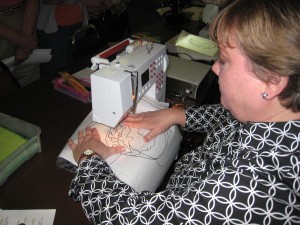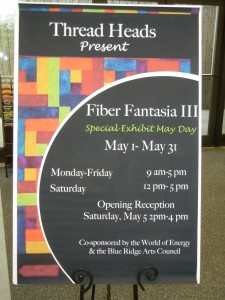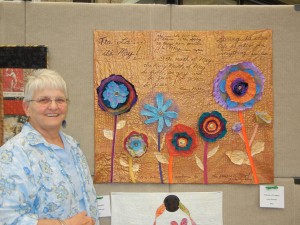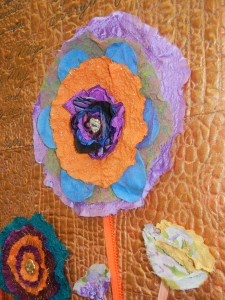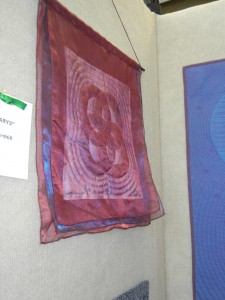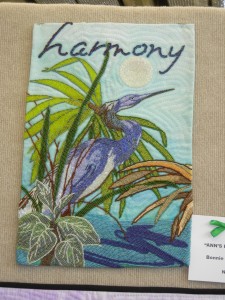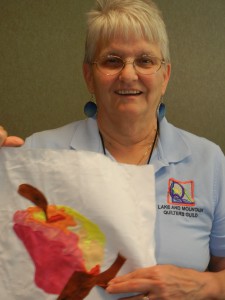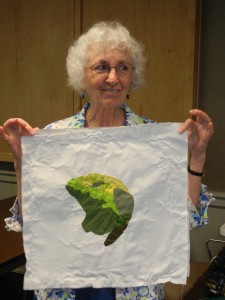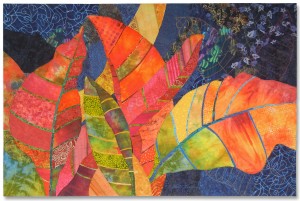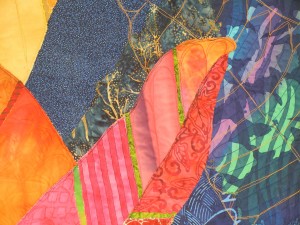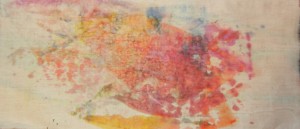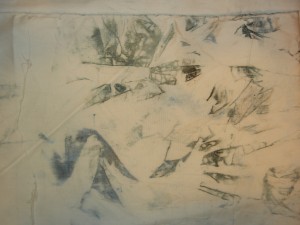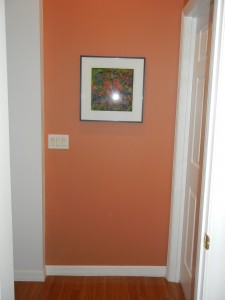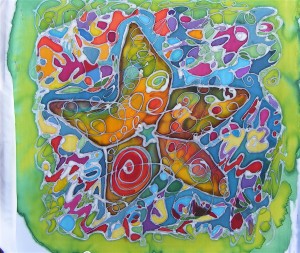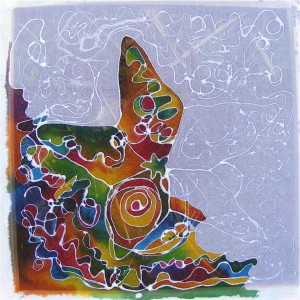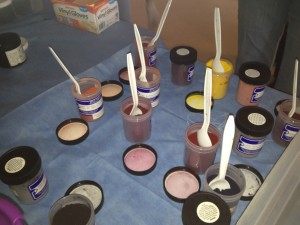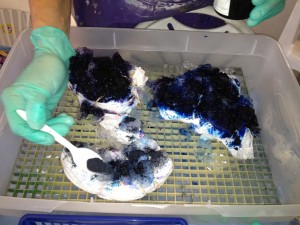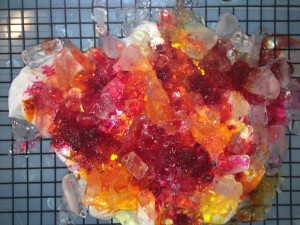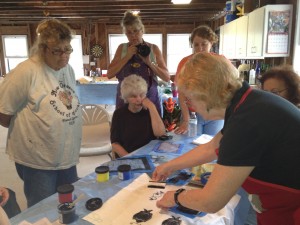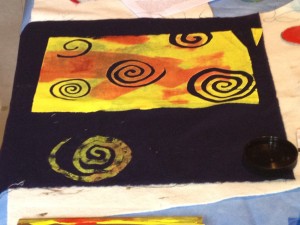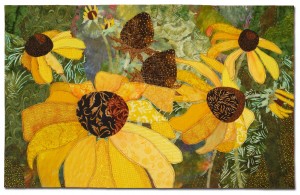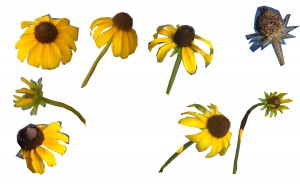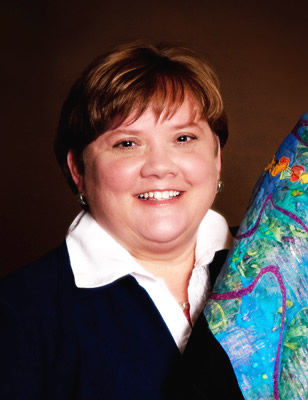In early May I got to teach in Seneca, SC, which was a wonderful experience. The members of Lake and Mountain Quilt Guild were very gracious hosts. I had multiple chauffeurs and dinner companions: a total of TEN! What fun for me. Plus, the area is really pretty and I got to see the lovely campus of Clemson University.
After an evening lecture, I taught two half-day classes. We started off with Instant Art Quilt, which challenged the ladies to work in a new way. They rose to the challenge magnifcently and were all at the quilting stage by the end of the 3-hour class.

Cheryl set some of her pieces at an angle, which gave her quilt a unique look. She used the light focal spot to her advantage, placing a loose tropical tree there, for highest contrast.
Click any image for a larger view
Penny did a beautiful job arranging the pieces of her fabric. Complementary blue was the perfect accent color.
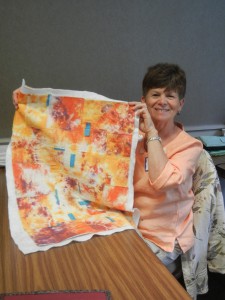
Martha used a vibrant fabric which gave her creation lots of drama.
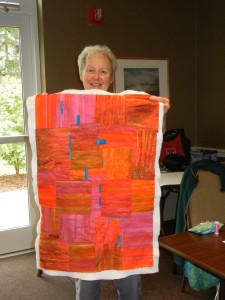
She was nice enough to share her fabric with Dillman, who’s quilt was equally colorful. Notice the difference diverse accent colors create. (If I remember correctly, Dillman’s was still in-progress at this point.)

Ronette also placed some of her pieces askew. Plus, she had lots of fun planning her accent pieces.
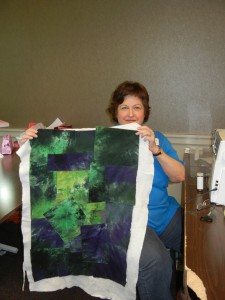
She had the foresight to bring some leftover purple bias tape. It was the perfect addition to her background, and launched her into playing with a loose tree idea. Here, she’s auditioning the idea of pale purple dots and bright green leaves. She removed it all for quilting and will play more afterwards. Fun, huh?

Libby took on the challenge of working with three different fabrics. This can be quite tricky, but her fabrics were very similar and she created a wonderful piece. Accent pieces of complementary yellow-green worked really well.
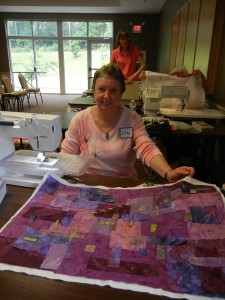
Judy’s multi-colored fabric provided lots of high contrast interest. She’s considering adding skinny twisted pieces of fabric for her accents. (I love it when the students get inventive!)
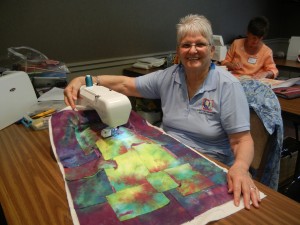
Shirley’s fabric was practically begging for fuchsia accents. Aren’t they wonderful?

Beatriz’s fabric was subtle, which gave her the opportunity to add TWO accent colors: orange and blue-green. Very unexpected, but effective, choices.
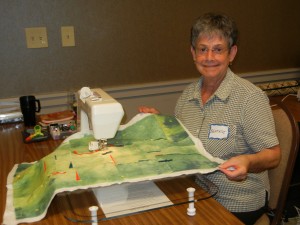
Since Chris wasn’t participating in the second class, she took advantage of the time and continued quilting her piece. It was pertty before, but the stitching really added to it! Please click on the photo for more detail.
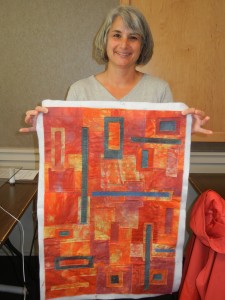
(My apologies to Sue, who got away without me photographing her quilt. You can see her working away behind Dillman, below.)
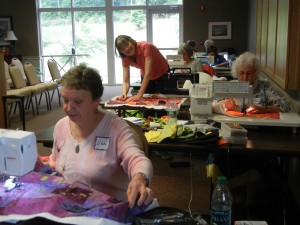
After this morning class, we switched gears and did Double Reverse Applique in the afternoon. See Part Two for that.
Ellen Lindner
P.S. I also teach this class online. More info here.
